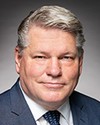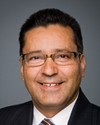Much of the funding and work, certainly within the universities, is focused more on pure and very early stage research. From a commercialization perspective, it is probably pre-commercialization by five years.
There are many challenges to getting your product. Once you develop your first-generation product and then put it into the field, you get a lot of field data. Then, taking that to the second and third generations ultimately is the platform to grow your company in the future.
There is not much focus on that industrialization process and not that much support for industrialization process. You are looking at how to optimize your manufacturing systems, how to optimize a design for reliability of the product. The technology is there; it's now a question of optimization for a commercial product that will operate in the real-world environment. There is not significant funding to support those activities.



